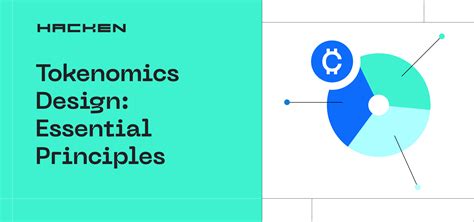The Future of Cryptocurrency: How AI is Revolutionizing Tokenomics
As the cryptocurrency market continues to grow and mature, a new wave of innovation is emerging. One key area where artificial intelligence (AI) is having a significant impact is tokenomics, the study of blockchain-based token economics. In this article, we explore how AI is transforming the way tokens are structured, traded, and perceived by investors.
What is tokenomics?

Tokenomics is the study of how tokens function within a blockchain ecosystem. It involves analyzing factors such as supply, demand, utility, and scarcity to understand the potential value and use of different tokens. Traditional approaches to tokenomics rely on manual calculations, simulations, or guesses about market behavior. However, AI has enabled more accurate predictions and better insights into the dynamics of token economies.
How AI is Revolutionizing Tokenomics
Several areas are being transformed by AI in the world of tokenomics:
- Dynamic Pricing: AI-based algorithms can analyze real-time market data, including supply and demand, to adjust prices and optimize trading strategies.
- Portfolio Optimization: Machine learning models can identify optimal portfolios based on a cryptocurrency’s potential returns, risks, and volatility, helping investors make informed decisions.
- Token Design and Creation: AI-based tools can generate new token designs, exploring different use cases and market opportunities without human intervention.
- Smart Contract Optimization: Automated tools can optimize smart contracts to improve their performance, security, and usability.
- Market Sentiment Analysis: Machine learning algorithms can analyze social media conversations, news reports, and other external factors to assess market sentiment.
AI Benefits in Tokenomics
The benefits of AI in tokenomics are many:
- Improved Accuracy: AI models can make more accurate predictions about market trends and opportunities.
- Increased Efficiency: Automated processes reduce the time and effort required for manual calculations, enabling faster decision-making.
- Improved Decision-Making
: AI-driven insights allow investors to better understand their investment options.
- Reduced Risk: Predictive models can help mitigate potential risks associated with token volatility.
Real-World Examples
Several companies are already leveraging AI in tokenomics to drive innovation:
- Chainlink: A decentralized oracle network that uses AI-based contracts to provide real-time data and price information for various cryptocurrencies.
- Compound: A lending protocol that uses machine learning algorithms to optimize lending rates, fees, and rewards for users.
- Polygon: A proof-of-stake blockchain platform that has developed an AI-based token optimization system to improve scalability.
Challenges and Limitations
While AI has the potential to revolutionize tokenomics, there are challenges and limitations to consider:
- Data Quality: The accuracy of AI models relies heavily on high-quality data; poor data quality can lead to biased or inaccurate results.
- Explainability: Complex AI algorithms can be difficult to understand and interpret; transparency is essential in tokenomics research.
- Regulatory Frameworks: The adoption of AI in tokenomics will require clear regulations and standards to ensure compliance with anti-money laundering (AML) and know-your-customer (KYC) requirements.
Conclusion
The integration of AI into the world of tokenomics has the potential to transform the way cryptocurrencies are structured, traded, and perceived by investors. As AI continues to advance, we can expect even more innovative applications in this space.
